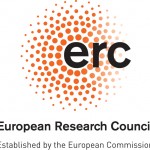Undertaking a project such as “Babylonian Medicine” is by no means a simple task. It compels us to deal with the complex questions that the ancient medical texts raise, such as to what extent these texts deal with magic or medicine or whether we should simply refer to healing practices? Is a given ancient term the name of a disease or is it describing a symptom? Since today’s local flora and inventory of diseases are not entirely reliable as a cross-cultural schema, how are we to deal with the ancient names of diseases, medicinal plants or other materia medica? One way is to translate ancient terms into modern languages and thus risk misleading present-day readers. The alternative is to leave technical terms untranslated, thereby making ancient practices more obscure. Common to all these questions is that they rarely have straightforward answers; they mainly evoke discussions.
Those very discussions, however, require expertise in various disciplines and approaches. For this reason, it was particularly significant that the fourth “Dahlem Seminar for the History of Science” began with a visit from one of the leading experts on ancient medicine, Sir Geoffrey Lloyd. His multi-perspective point of view was of immense importance for this BabMed inaugural event. His inspiring talk stressed the roles of anthropological models in understanding ancient medicine. First, we heard in his lecture about the significance of analogisms and analogical systems in the practice and theory of ancient healing. Lloyd also emphasized the implications of the dichotomy between interiority and physicality when trying to analyse ancient systems of thought.
Lloyd suggested that one of the major reasons why we encounter difficulties with this type of cross-cultural comparison is that we tend to think there is one universal mechanism called “nature” and that each human culture has a specific approach to it. But “culture” is actually the one phenomenon that is universal and common to all human societies and that, in order to communicate and thus prosper, each culture has invented its own apparatus to understand its environment. Therefore, the many different perceptions of “nature” can be found around the globe.
Later on, a group of doctoral students also had the chance to participate in an informal meeting with our honoured guest. This meeting turned out to be very fruitful for all the participants as each member of the group got the chance to present his or her own project and field of interest. In return, Sir Geoffrey was happy to share his insights on how to approach some of the problems presented and also pointed out interesting parallel phenomena from other cultures. Overall, the visit was very productive precisely because it provided the group with the kind of broadly formulated comparative point of view that we need in order to make sense of ancient medicine.
Netanel Anor
The BabMed Project has received funding from the European Research Council under the European Union’s Seventh Framework Programme (FP7/2007-2013) / ERC Grant agreement no. 323596.




 Die
Die